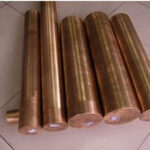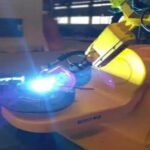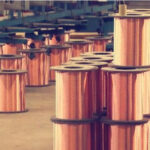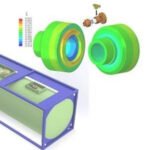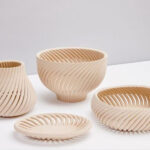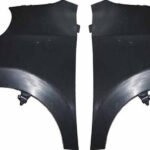C172 Precipitation Hardening Beryllium Copper-based Alloy
Table of Contents
|
This article mainly introduces the cutting technology of C17200 precipitation hardening beryllium copper-based alloy. From the cutting characteristics of C172, the choice of cutting tools, the choice of tool geometric parameters, the choice of cutting amount, the choice of cutting fluid, milling and drilling, Introduce our machining experience of C172 in recent years. Through a series of technical means and machining experience, C172 has been widely used in the field of petroleum logging. |
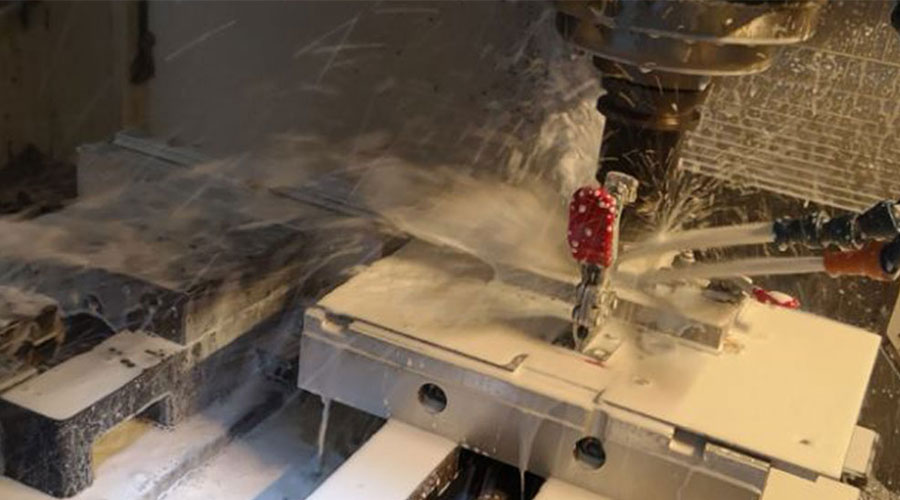
C172 is a precipitation hardened beryllium copper-based alloy with good comprehensive properties. The alloy has higher hardness, strength, elastic limit and fatigue limit after solution aging treatment. It also has strong corrosion resistance, electrical conductivity and non-magnetism, making it in harsh environment of low temperature, high temperature, high pressure and acid. Has a longer life. Therefore, it is widely used in various high-tech manufacturing industries, and is especially suitable for petroleum logging instruments developed and produced by our company, which makes the instruments meet the requirements for use in harsh downhole environments.
1. C172 Cutting Characteristics
- (1) Work hardening. Due to the presence of beryllium, C17200 has a phenomenon of rapid polymerization and hardening during machining. The work-hardened layer is ≥0.007mm. Therefore, it is necessary to choose a relatively sharp tool and a reasonable cutting depth during machining to prevent excessive tooling caused by the hardened layer. The occurrence of wear and machining difficulties.
- (2) The cutting force is large. After solution aging, the hardness and strength of C17200 are significantly improved, which can reach 38 ~ 44HRC. The large cutting force and plastic deformation generated during cutting increase the friction between the workpiece and the tool, and generate a large amount of cutting heat. Therefore, cutting fluid is required to reduce the cutting temperature during machining.
- (3) Poor rigidity. C17200 has a modulus of elasticity of 128GPa, which is 60% of that of rigid materials. It is prone to distortion during machining. Therefore, workpieces and tools should choose a more solid support.
- (4) The tool is easy to wear. After solid solution aging, in addition to the significant increase in hardness and strength, a wear-resistant oxide film is also formed on the surface. This oxide film can aggravate the wear of the tool. In addition, C17200 has large plastic deformation and high cutting temperature 2, the cutting force is large, the tool is also easy to wear. However, the wear of the tool is proportional to the cutting speed and feed amount, and a reasonable cutting speed and feed amount can reduce the degree of tool wear.
2. Selection Of C17200 Cutting Tools
Tools are an important factor in ensuring production, and reasonable tools can improve machining efficiency and product quality. At present, the cutters used in most machining plants have two materials, high-speed steel and hard alloy. Both tools have high wear resistance and strength, but the high-temperature resistance and cutting accuracy of high-speed steel are weaker than hard Carbide alloys, and the C17200 machining process tends to produce higher cutting temperatures and cutting forces. Therefore, carbide cutting tools are the best choice when cutting C17200. Commonly used cemented carbide cutters include YG3, YG8, YG6, YT4, and YT5. Due to the strong affinity of the YT series cemented carbide cutters and materials, the tool wear will be exacerbated. Therefore, when cutting, choose YG series hard alloy cutting tools. The types of hard cutting tools used by our company are YG6 and YG8.
3. Selection Of Tool Geometric Parameters When Cutting C172
- (1) Blade shape. For the cutting of C17200 high-strength and high-hardness materials, in order to prolong the service life of the tool, improve the vibration resistance of the tool, and improve the quality of the machining surface, the arc edge is selected during machining, and the radius of the tool tip arc rε = 0.1 to 0.8 mm.
- (2) Blade type. In order to increase the cutting edge strength, reduce tool breakage, and improve heat dissipation conditions, select negative chamfering during machining, width bγ1 = (0.3 ~ 0.8) f, and angle γo1 = -10 ° ~ -5 °.
- (3) Knife face type. In order to reasonably control the flow of chips, reduce cutting heat, and reduce tool wear, choose a chip flute or chip breaker during machining. The arc radius of the groove bottom Rn = (2 ~ 7) f.
- (4) The rake angle γ o. When cutting C17200 high-strength and high-hardness materials, a smaller rake angle can increase the contact area between the rake face and the chip, increase the heat dissipation area, and increase the strength of the cutting edge, and improve the heat dissipation conditions of the cutter head. It is 5 ° to 10 °.
- (5) Rake angle α o. In the C17200 cutting process, using a smaller clearance angle can increase the strength of the cutting edge and reduce the risk of chipping, but a smaller clearance angle will increase the friction between the main flank and the workpiece, shorten the service life of the tool, and reduce the The quality of the surface roughness of the processed surface, generally the relief angle α o value is 6 ° ~ 8 °.
- (6) Principal declination κr and secondary declination κ´r. With the same feed rate and cutting depth, the smaller main declination and auxiliary declination can increase the cutting length of the main cutting edge, reduce the cutting force per unit area of the main cutting edge, and improve heat dissipation conditions. Reduce the friction between the secondary flank and the machined surface, and reduce the surface roughness of the workpiece. However, the hardness and strength of C17200 is relatively high, and the smaller main deflection angle makes the radial force on the tool larger, which increases the risk of chipping. Under the condition that the stiffness of the process system is good, the general declination angle κ r value is 45 ° ~ 75 °, and the secondary declination angle κ´r value is 5 ° ~ 10 °.
- (7) Blade inclination angle λs. Because Machining Beryllium Copper C17200 has higher strength and hardness after solution aging, in order to increase the strength of the main cutting edge, increase the flow rate of chips, avoid the generation of chipping, prevent scratches on the processed surface, and the blade inclination during rough machining The value is -10 ° ~ -5 °, and the tool inclination angle is 0 ° during finishing.
4. Choice Of C17200 Cutting Amount
- (1) Cutting speed vc. The choice of cutting speed is mainly limited by various factors such as tool wear resistance, machine power, material hardness, and machining efficiency. With a certain machine tool power, a lower cutting speed is used when cutting C17200 to extend the service life of the tool. Reduce the cutting temperature and reduce the occurrence of accumulated cuts, but too low cutting speed will greatly reduce the machining efficiency. Therefore, the cutting speed used when cutting C17200 is generally 100 ~ 200m / min.
- (2) Cutting depth αp. The effect of cutting depth on the wear resistance of the tool is the smallest, and a larger cutting depth can be used in machining to improve the machining efficiency, increase the working length and width of the cutting edge, reduce the cutting force per unit area of the cutting edge, and prolong Tool life, but excessive cutting depth will require high rigidity of the process system, especially for C17200 high hardness and high strength cutting, so the cutting depth of C17200 is generally 0.05 ~ 3mm.
- (3) Feed amount f. The selection of the feed amount is mainly affected by three factors: cutting force, machining efficiency and surface roughness. A large feed amount improves the machining efficiency, but increases the cutting force and surface roughness value; a small feed amount decreases The cutting force and surface roughness values are small, but the machining efficiency is reduced. Therefore, it is necessary to choose a reasonable feed rate. C17200 has high strength and hardness after solid solution aging, and generates a large cutting force during the cutting process, so that the feed amount cannot be too large. A small feed amount reduces the machining efficiency and increases the machining cost. Generally, The feed of C17200 is 0.1 ~ 0.15mm / r.
5. Selection Of Cutting Fluid When Cutting C172
The use of cutting fluids during cutting can dissipate heat and lubricate, thereby extending tool life, improving machining efficiency and product quality. A large amount of cutting heat is generated during the C17200 cutting process, which increases the cutting temperature. Therefore, the main role of the cutting fluid when cutting C17200 is to accelerate the diffusion of cutting heat, reduce the cutting temperature, and extend the service life of the tool. Emulsions made from soluble oil have a significant effect on heat dissipation, but the sulfur contained in its components will cause a small spot on the surface of C17200, leaving a hidden danger of scrapping the workpiece. Poor, but its lubricating effect is relatively obvious, reducing the friction between the tool and the workpiece, and reducing the generation of cutting heat. Therefore, the cutting fluid of mineral oil plus 3% to 7% lard is used for C17200 cutting.
6. C17200 Milling
C172 has high strength and hardness. When milling, the cutting edge must be sharp and have strong impact resistance. Although both high-speed steel milling cutters and carbide milling cutters can be used for C17200 milling, the machining accuracy of cemented carbide milling cutters is higher than that of high-speed steel milling cutters. Therefore, carbide milling cutters are used when milling.
When cnc milling C172, asymmetrical down milling method should be adopted. This can effectively reduce the friction between the milling cutter and the workpiece, stabilize the workpiece, and reduce tool vibration. During the milling process, some cutting fluids can be used to extend the life of the milling cutter and reduce the surface roughness of the workpiece.
7. C172 Drilling
When drilling C172, you can choose high-speed steel twist drill for hole drilling. The helix angle of the drill is 29 °, the vertex angle is 118 °, and the drill edge angle is 12 °. If necessary, a specially sharpened tool tip can be used. Due to the high strength and hardness of C172, a lower cutting speed is required, and cutting fluid needs to be poured for cooling and lubrication, which helps the smooth discharge of chips, prevents chips from scratching the processed surface, reduces drill wear, and extends the drill. Life. At the same time, during the drilling process, it is necessary to ensure the constant cutting speed and feed rate, to prevent the work hardening of the hole bottom, and to bring greater difficulties to the machining.
8. Conclusion
As a material with good comprehensive properties, C172 has been widely used in the field of petroleum logging. Its high strength and high hardness make it easy to generate large cutting force and high cutting temperature during machining, which aggravates the tool. Therefore, we must combine the cutting characteristics of C172 during machining to select reasonable cutting tools, tool geometric parameters, cutting amount and cutting fluid. At the same time, we need to arrange reasonable machining technology in production according to the actual situation.
Link to this article: Cutting Techniques of C172 Precipitation Hardening Beryllium Copper-based Alloy
Reprint Statement: If there are no special instructions, all articles on this site are original. Please indicate the source for reprinting:https://www.cncmachiningptj.com/,thanks!
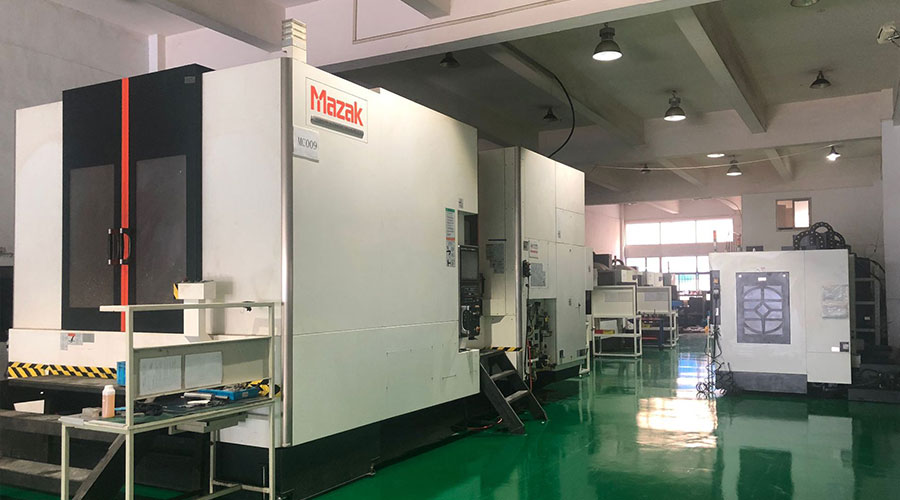 PTJ® provides a full range of Custom Precision cnc machining china services.ISO 9001:2015 &AS-9100 certified. 3, 4 and 5-axis rapid precision CNC machining services including milling, turning to customer specifications,Capable of metal & plastic machined parts with +/-0.005 mm tolerance.Secondary services include CNC and conventional grinding, drilling,die casting,sheet metal and stamping.Providing prototypes, full production runs, technical support and full inspection.Serves the automotive, aerospace, mold&fixture,led lighting,medical,bicycle, and consumer electronics industries. On-time delivery.Tell us a little about your project’s budget and expected delivery time. We will strategize with you to provide the most cost-effective services to help you reach your target,Welcome to Contact us ( [email protected] ) directly for your new project.
PTJ® provides a full range of Custom Precision cnc machining china services.ISO 9001:2015 &AS-9100 certified. 3, 4 and 5-axis rapid precision CNC machining services including milling, turning to customer specifications,Capable of metal & plastic machined parts with +/-0.005 mm tolerance.Secondary services include CNC and conventional grinding, drilling,die casting,sheet metal and stamping.Providing prototypes, full production runs, technical support and full inspection.Serves the automotive, aerospace, mold&fixture,led lighting,medical,bicycle, and consumer electronics industries. On-time delivery.Tell us a little about your project’s budget and expected delivery time. We will strategize with you to provide the most cost-effective services to help you reach your target,Welcome to Contact us ( [email protected] ) directly for your new project.
Link to this article:Cutting Techniques of C172 Precipitation Hardening Beryllium Copper-based Alloy
Reprint Statement: If there are no special instructions, all articles on this site are original. Please indicate the source for reprinting.:Cnc Machining,Thank!^^

